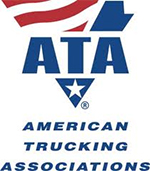Truckload Carrier Driver Turnover Rate Heads Up

Data issued by the American Trucking Associations today shows that the annualized driver turnover rates at large truckload fleets remains high.
The American Trucking Associations said that the annualized turnover rate for large truckload carriers, which it defines as truckload fleets with more than $30 million in revenue, increased 3 percent to an annualized rate of 87 percent in the second quarter.
In the first quarter, the turnover rate fell 12 percent to 84 percent, which marked the lowest turnover level going back to the second quarter of 2001, as well as the first time it had dipped below the 90 percent mark since 2011.
What’s more, the American Trucking Associations said that large fleet turnover now is at its lowest level since the second quarter of 2011 and also below the 2014 average of 95 percent.
For small truckload fleets, which are defined by the American Trucking Associations as those under $30 million in revenue, the turnover rate decreased by 7 percent to 76 percent for its lowest level since the third quarter of 2013.
“While below recent averages, driver turnover is still high and a sign of a very competitive market for qualified drivers,” American Trucking Associations Chief Economist Bob Costello said in a statement.
“We repeatedly hear from carriers that they are unable to find enough qualified drivers, leading to fears of a growing driver shortage and these numbers reflect that. America’s trucking industry moves nearly 70% of the country’s freight and we need drivers to do it. While turnover is not at historic highs, it is still high enough to merit concern. Fleets need to hire 89,000 a drivers a year to keep pace with retirements and projected growth, so ensuring an adequate pool of qualified drivers is critical”
This data follows a report issued by the American Trucking Associations last week, entitled “Truck Driver Analysis 2015.”
The chief findings of the report cited how the current shortage of truck drivers now stands at almost 48,000 and has the potential to go higher, due in large part to industry growth and drivers parking their trucks on the way to retirement and also noting that if current trends remain intact, the driver shortage could rise to around 175,000 by 2024.
Many industry stakeholders say that the lack of available - and willing - drivers will only get worse in the coming years, with the average age of drivers still firmly entrenched around 50.
Even with an increased onus on augmenting driver training, retention, and compensation packages, many carriers are still struggling with how to fill the empty seats.
The ongoing driver shortage still serves as a major factor for tight over the road capacity, which has been burdensome for shippers in that they need to pay higher rates in order to get their freight moved in a timely and efficient manner.
At last month’s Intermodal Expo in Ft. Lauderdale, Fla. FTR Senior Analyst Noel Perry said that a slew of federal regulations (such as HOS, ELD, and CSA, is continuing to put pressure on driver supply.
“When the HOS driver restart provision was suspended in late 2013, the sector got an extra three-to-four percent of productivity, but with other regulations set to slowly kick in, there will be a record driver shortage by the end of 2016 and into 2017 and 2018.”
“The short-term dynamic of that is the industry having to hire a lot of people, and the long-term dynamic is what makes it hard to hire lots of people, such as the slowing down of the rate of growth in the labor force.”
Related: Dire Situation with Driver Shortage Remains

Article Topics
American Trucking Associations News & Resources
Trucking industry balks at new Biden administration rule on electric trucks: ‘Entirely unachievable’ Groups warn of $1 trillion cost for electrification of America’s trucking industry New coalition is focused on fighting new Labor Department independent contractor rule ATA data points to truck tonnage declines to start 2023 December Truck tonnage ends 2023 with a modest gain, reports ATA ATA warns of ‘tangled mess’ due to latest Labor Department independent contractor ruling November truck tonnage is down, reports ATA More American Trucking AssociationsLatest in Transportation
Baltimore Bridge Collapse: Impact on Freight Navigating Amazon Logistics’ Growth Shakes Up Shipping Industry in 2023 Nissan Channels Tesla With Its Latest Manufacturing Process Why are Diesel Prices Climbing Back Over $4 a Gallon? Luxury Car Brands in Limbo After Chinese Company Violates Labor Laws The Three Biggest Challenges Facing Shippers and Carriers in 2024 Supply Chain Stability Index: “Tremendous Improvement” in 2023 More TransportationAbout the Author















